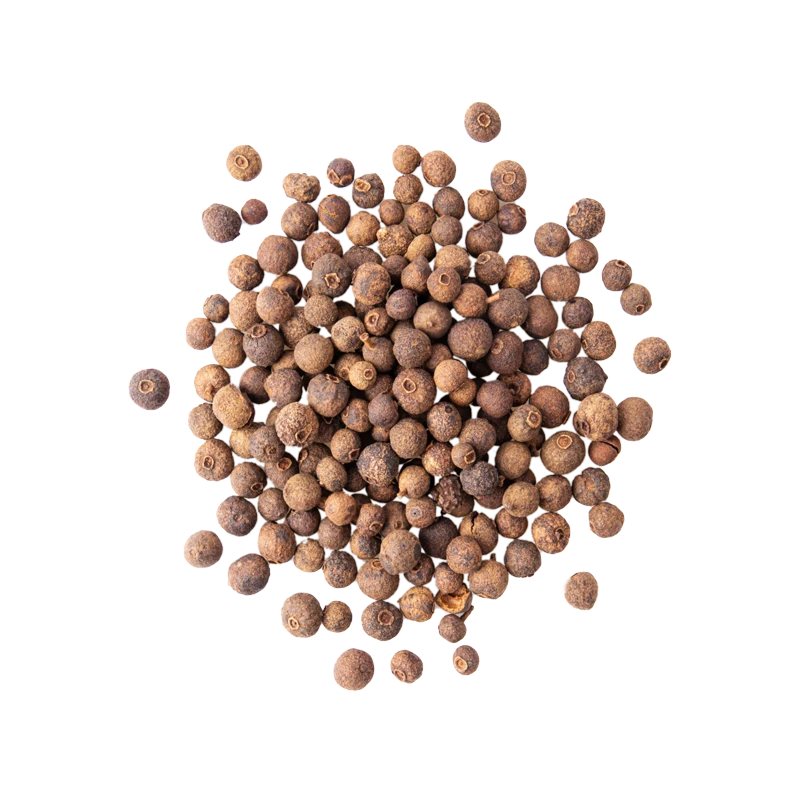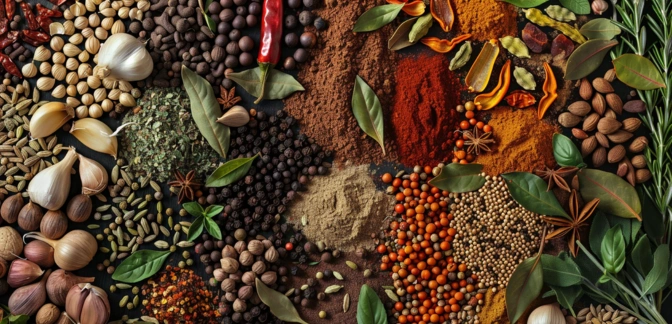Allspice — Nutrients, Health Benefits, And Shopping Tips

Written by Listonic Team
Last update on September 4, 2024
Nutrients
Nutrition facts
Amount per 100 g
Calories
🔥 263 kcal
| Nutrition per: 100 g | Value | % Daily Value* |
|---|---|---|
| Carbs | 72 g | 26.18% |
| Fiber | 22 g | 78.57% |
| Sugars | 0 g | - |
| Glycemic Index | 5 | - |
| Protein | 6 g | 12% |
| Sodium | 77 mg | 3.35% |
| Total Fat | 9 g | 11.54% |
*The % of Daily Value (DV) tells you how much a nutrient in a serving of food contributes to a daily diet. 2,000 calories a day is used for general nutrition advice.
22 g
✅ High Fiber Content
5
🟢 Low Glycemic Index
Key takeaways
Health benefits
- Rich in antioxidants, which help protect the body from free radicals and reduce inflammation.
- Supports digestive health by promoting healthy digestion and reducing symptoms of indigestion and bloating.
- Contains antimicrobial properties, which can help fight off infections and boost the immune system.
- Provides essential nutrients such as vitamins A and C, which are important for overall health and well-being.
Health risks
- Potential allergic reactions as some individuals may be allergic to allspice, leading to symptoms such as itching, swelling, and difficulty breathing.
- Gastrointestinal discomfort when consumed in large amounts, which can cause nausea, vomiting, or diarrhea.
- Interactions with medications such as anticoagulants, as allspice can affect blood clotting and may enhance the effects of these medications.
- Skin irritation due to the essential oil of allspice, which can cause skin sensitivity or dermatitis in some people when applied topically.
How to choose allspice
Choose allspice berries that are round, heavy, and free of cracks or mold. A rich, brown color and a strong, spicy scent are indicators of good curing and freshness, making them ideal for robust flavors in cooking.
Avoid allspice with a dull color or a weak aroma, as these are signs of age and diminished flavor. Allspice berries that crumble easily when pressed are often too old and will not deliver the desired piquancy in dishes.

How to store allspice
For optimal freshness, keep allspice in an airtight container in a cool, dry, and dark place. A pantry or a spice cabinet away from the stove or any heat sources is ideal. This will help preserve its flavor and aroma for up to a year.
Exposure to moisture or direct sunlight can degrade its quality. Heat from the oven or other appliances can cause the spice to lose its potency. Keeping allspice in unsealed containers can allow air and humidity to diminish its flavor over time.
✅ Extra Tip
How long does it last?
Allspice can last for 3-4 years when stored in an airtight container in a cool, dark place. Ground allspice has a shorter shelf life of about 1-2 years due to its greater exposure to air and potential loss of potency. To maximize its freshness, it's essential to store allspice away from heat and moisture. Using it within these time frames ensures the best flavor in your dishes.
What to do with leftovers?
Leftover allspice can be put to good use in both sweet and savory recipes. Add it to baked goods like cookies, cakes, or pumpkin pie for a warm, spiced flavor. It's also a key ingredient in spice blends like Jamaican jerk seasoning or Middle Eastern baharat, which can be used to season meats, vegetables, or rice dishes.
Allspice can enhance the flavor of homemade barbecue sauces or stews, giving them a deeper, more complex taste. You can also use it to infuse your morning coffee or tea with a hint of spice, or mix it into a warm mug of hot chocolate for a cozy treat. Add a pinch to roasted vegetables or sprinkle it into your homemade granola for an unexpected flavor boost.
👨⚕️️ Medical disclaimer
Discover products from other categories
Listonic Team
Fact-checked
Our editorial team checked this article to make sure it was accurate at the time of publishing it.
Get the top-rated shopping list app on your phone!







